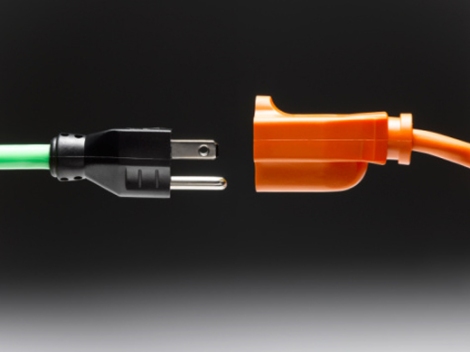A reader of my post here sent me an e-mail message raising concerns about whether installing charging stations could make a community association an unlicensed electric power re-seller. The reader raised an important issue. As renewable/green energy infrastructure develops, so will statutes and regulations pertaining to it. Any association interested in such things as electric vehicle charging stations or solar energy will want to be particularly sure to consult with legal counsel to ensure that contracts for such improvements address these evolving legal issues.
Specifically regarding electric vehicle charging stations in California, as part of its efforts to implement recently enacted Senate Bill 626 (requiring the PUC to develop policies to develop infrastructure for plug-in hybrid and electric vehicles) the California Public Utilities Commission (CPUC) very recently issued a decision that companies which sell electric vehicle charging services will not be regulated as public utilities pursuant to the Public Utilities Code and that, unless the charging station provider procures electricity on the wholesale market, utility sales of electricity to electric vehicle service providers do not constitute a “sale for resale” under the Federal Power Act. In fact, the CPUC decision states, as a Conclusion of Law, that “condominium associations that provide electric vehicle charging on the premises as a service to the condominium owners . . . that have not dedicated their equipment to public use” are also not public utilities. Notwithstanding this, the CPUC does, of course, have authority to dictate the terms under which the utility providing the electricity to power the charging stations provides service, so regulations requiring, for example, that customers notify a utility of anticipated increased connected load would need to be followed. Again, it will be important for community associations installing charging stations to consult with legal counsel to address these issues during the contracting stage.
With respect to rates, since the CPUC has decided that electric vehicle charging service providers will not be regulated as public utilities it will not be directly regulating the rates charged to use charging stations. Insofar as the cost to purchase the electricity to power the charging station is regulated by the CPUC, however, and will be the largest business expense for the charging station’s owner (whether the association or a third party), the CPUC’s decisions regarding tariff rates will, of course, have an indirect impact.
Failure to understand and address these sorts of regulatory issues can really throw a monkey wrench into the works of what should be a successful effort to “green” a community. For example, earlier this year it was reported in local (Los Angeles area) media that a $25 million “solar farm” installed in the vast campus parking lots of a community college were sitting “unplugged”. The solar equipment, owned by a third party, was intended to supply electricity to the Los Angeles Community College District via a Power Purchase Agreement (PPA), but the Los Angeles Department of Water and Power (DWP) would not agree to the arrangement, since the Los Angeles city charter bars the sale of power by any entity other than the DWP. (This differs from state law pertaining to investor-owned utilities, which generally do approve PPAs). Last I heard the LACCD was working on another financing arrangement, but these issues would, of course, have been more easily (and, I am sure, more cost effectively) addressed before the solar system was installed, not after.

























